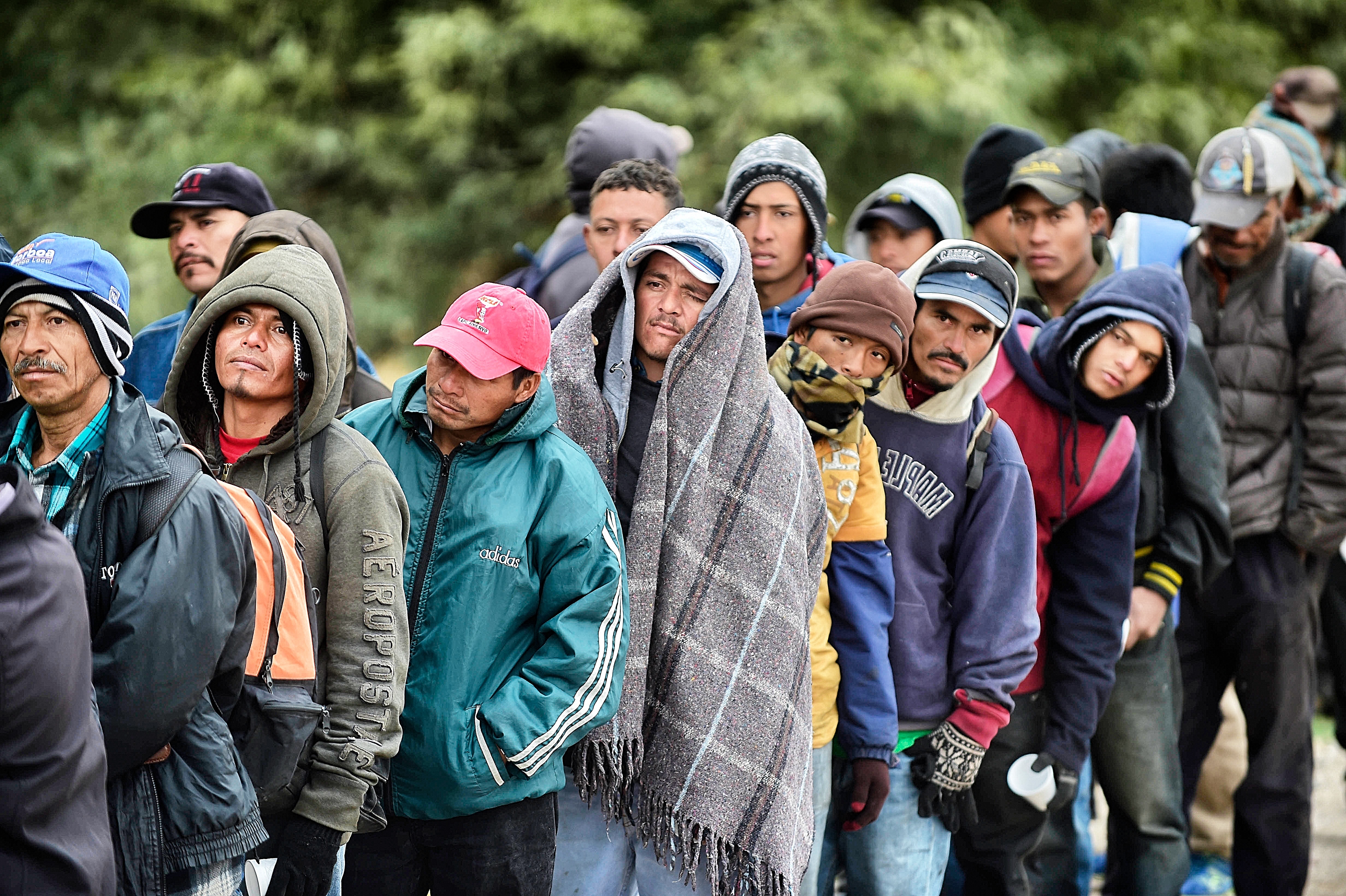
Hundreds of Central American and Mexican migrants attempt to cross the US border daily. / AFP PHOTO /
by Yemeli ORTEGA
Agence France Presse
SASABE, Mexico (AFP) — Migrants trying to sneak into the United States from the parched Mexican desert have to contend with border guards’ drones overhead, poisonous snakes underfoot and human trafficking gangs at their backs.
But these challenges are nothing compared to their bigger fear: that someday soon, US President-elect Donald Trump will build a wall to keep them out altogether.
So before Trump takes office on Friday, they are racing against time, riding a freight train up to the border to look for a way across.
In the town of Caborca near the frontier, a group of Hondurans warm themselves by a fire of trash in the early morning cold.
One of them, Wilson, a 48-year-old builder, missed the birth of his daughter to make the journey. Getting to the United States before Trump takes control was more important.
“When I saw that man on the television saying how he hated migrants and was going to build a wall, I thought: ‘It’s now or never,” said Wilson, who would not give his last name.
“So we all spent Christmas and New Year traveling to try to get here in time. We want to beat him to it.”
Mexican authorities are arresting thousands, sometimes tens of thousands of undocumented migrants each month, according to government figures.
Governors of several northern states this week called for extra resources to deal with the surge.
Laura Ramirez, a local charity activist, has been serving more than 200 free lunches a day to migrants.
“There are more and more migrants coming,” she says.
Walk like a cow
In the border town of Sasabe, marks in the rust on the border fence appear to show a spot where migrants climbed over, says Sergio Flores, leader of a government migrant task force.
“They have been getting sophisticated” in their efforts to get across undetected, he says.
Nearby on the sand lies a bottle of water, painted black — a common trick to stop the plastic shining in the sun and catching the eye of border guards.
That is just part of the typical migrant survival kit, Flores says.
The migrants wear soft-soled slippers so as not to leave footprints in the sand, along with camouflage clothes and masks.
Some have even made soles for their shoes that make their footprints look like cows’ hooves.
Some put sanitary pads in their socks to cushion their feet on long walks.
In their rucksacks they carry anoraks, remedies for snake bites, alcohol for lighting fires, talcum powder for their feet and painkillers.
They buy their supplies in the shops on the town square in the local village of Altar — an area dubbed “Migrants’ Wal-Mart.”
Coyotes and mules
The migrants pay about $1,000 each to so-called “coyotes” — people traffickers — to bring them here from their native countries.
On arrival, some traffickers tell the migrants they must pay another $5,000 to get across the border.
“It’s big business,” Flores says.
Some who cannot pay the traffickers instead cross the border as drug “mules,” with 50 kilograms (110 pounds) of marijuana on their backs.
“You have to bring your own water, food and blanket,” says one such “mule,” a Honduran migrant who called himself El Guero.
“They don’t pay us. The payment is being allowed to cross.”
Not welcome
Trump sparked outrage during his election campaign when he branded immigrants from Mexico criminals and rapists.
The insult rankles with the migrants on the migrant trail.
“That racist man is panicking,” said El Guero. “Our only sin is being born in an impoverished country and not having enough money to pay the gangs.”
Just across the US border in the town of Arivaca, Arizona, locals mistrust the migrants.
“We cannot deny that they bring trouble,” says a waiter in the town, who asked not to be named.
“I just think they shouldn’t be here. This is not their home.”
Last week, in his first press conference since winning the election, Trump reiterated his campaign promise to build a wall along the border.
In Caborca, Wilson gazes towards the north, where he hopes soon to cross over to a better life.
“I trust God will soften Trump’s heart,” he says.
© 1994-2017 Agence France-Presse







